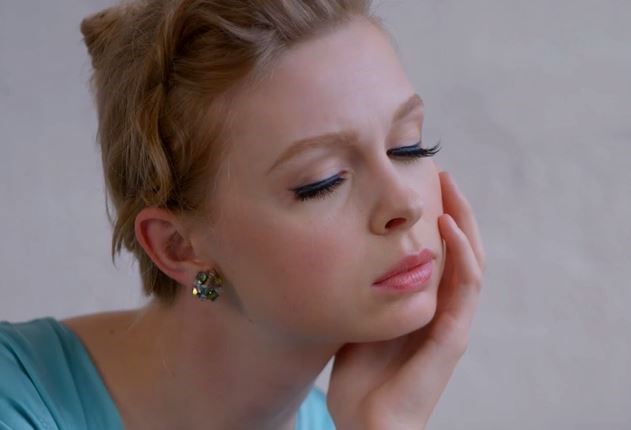TORONTO — Rachel Romu has worked hard to overcome multiple health challenges – a spinal tumour, major surgeries and a rare genetic disease.
The 29-year-old from Thunder Bay can chalk up a major accomplishment in their efforts to disprove common assumptions about people with disabilities.
Romu is one of the stars of AMI-tv's new documentary series, Breaking Character (in partnership with Winterhouse Films Inc.) which profiles the daily lives of six differently disabled performers.
Romu is a model, musician and activist who now lives in Toronto.
They were a promising track and field athlete in Thunder Bay, and represented Canada in the Youth Olympics in Singapore in 2010.
Competing in the long jump, they finished with a Top 10 world ranking.
But between 2014 and 2016 Romu suffered back pain, required surgery to remove a tumour in their back, and ultimately needed a second surgery to repair damage caused by eight screws falling out.
Finally, they were diagnosed with a debilitating connective tissue disease called Ehlers-Danlos Syndrome, which requires them to use a mobility aid.
Being forced by circumstances to drop their athletic aspirations, Romu turned to what they have described as "the opposite end of the spectrum," a career in modelling.
"In recovery I decided I wanted to do something physical again," Romu told TBnewswatch, noting that their mother was a model in the 1980s, and used to place people through Lakehead Modelling School at agencies throughout North America.
"The modelling career that I didn't really want to pursue...became meaningful to me because I wanted to create disability visibility," they said.
It didn't take long for the decision to pay dividends.
Already in 2017, Romu was offered the opportunity to walk down a runway in Toronto's Fashion Week, where they were the only model with a visible disability.
It's how Romu caught the eye of the producers of Breaking Character.
Romu 'couldn't have even imagined' being on-screen while in hospital for surgery
Being chosen as one of the highlighted performers means a lot, they said, because it's an opportunity "to be part of the solution, where disability visibility is happening both on-screen and behind-screen in such a moving way. This is something I couldn't have even imagined when I was lying in the hospital for my second spine surgery."
Romu explained that the documentary series is also the first of its kind produced for cable TV by a person who has a disability.
In the past decade less than three per cent of films have featured characters with a disability, states an AMI press release, "and often, these rarest of roles have been taken by neuro-typical and able-bodied actors."
AMI says the industry is at a tipping point as it feels the push for more inclusive representation, but there are signs of change.
Major broadcasters have committed to auditioning actors with disabilities, while advertisers are creating campaigns that reflect disabilities in a relatable manner while promoting their products.
Romu's own journey brought them a recent role in a national ad campaign with Roots Canada
"I was on store windows across the country with a bunch of other people. It was revolutionary because there were multiple people with disabilities in that campaign," they said. "It's the biggest thing I've gotten to do to date."
Romu's agents are getting more and more inquiries about their client's availability for work.
But Romu hopes their personal successes inspire the 22 per cent of Canadians who identify as having a disability feel more optimistic about their own opportunities.
"It's really important to create that visibility," they said, adding that viewers of the documentaries will see that "We can do all the things that everyone else can do so long as we're accommodated for."
One of the episodes in which Romu appears takes viewers to Thunder Bay to show how they're able to enjoy riding an ATV.
"No matter what I do, because I have a physical disability and use a cane, and because my age makes it so people don't assume I should use a cane, I get a lot of questions anytime I do something physical," they said.
"When I'm riding the ATV it looks really cool to be standing. It's actually a lot easier for me to stand because my legs are strong. It's my back and my core muscles that are terribly weak... but ultimately, only I need to know my truth, and just pursue my life in a way that makes me happy."
Episodes of the 10-part series are broadcast each Wednesday at 8 p.m. EST, and can also be streamed on demand on AMI.ca.
